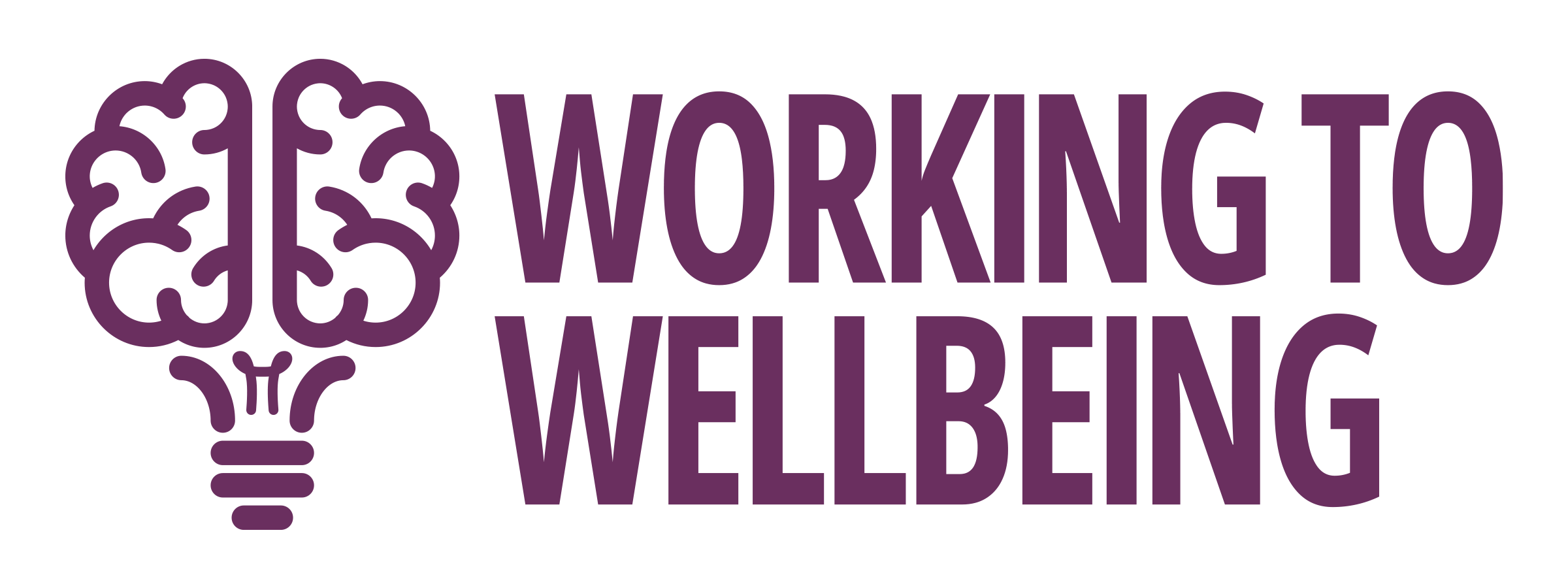The science of cues, stacking behaviours and rewards.
By Dr Julie Denning – Managing Director at Working To Wellbeing
Did you know that there is a nutrition and hydration week each year? A week where the spotlight is shone on good eating and drinking habits. As you know, at Working To Wellbeing we always want to look beyond a given week and make sure that good health habits are adopted all year round not just on a given day or week. So in this article, I won’t be focusing on the content of your diet or the amount of water you should be drinking, rather we will look at the behaviour change that is required to eat more healthily and to increase water consumption. Too often we can get caught up in what psychologists call the ‘intention-behaviour gap’. We know we want to do it, e.g. ‘I must eat my 5 -a-day today or, I must drink 2 litres of water a day, however, this intention or desire doesn’t always translate into action. The good news is that it is possible to shrink the intention behaviour gap and help you with your health goals.
I want to just give you a few reassuring thoughts before we go any further.
- Cut yourself some slack, behaviour change is a tough gig.
- Make sure that you have a positive attitude towards your desired new behaviour as you’ll be much more likely to do it (Judah et al 2012). For example, don’t take up yoga if you don’t like yoga. Yes, it is a brilliant way of exercising but if you don’t like it, you are never going to do it. Find another exercise you do enjoy.
- Research has shown that it can take on average, up to 66 times of doing the new behaviour for it to become habit (Lally, Van Jaarsweld, Potts and Wardle 2010) So, that’s 2 months folks. You’ll need to be in it for the long(er) haul. But take heart, that’s only 2 months of your life, not much really if you are going to get a lot of benefit from your new behaviour. Tenacity will be your friend.
- It may help you to know that it is not the end of the world if one day you forget to do the new behaviour. Missing one opportunity to perform a new behaviour doesn’t necessarily determine whether a habit will be formed or not (Lally et al 2010), so if you miss doing it once, then it’s not going to make all that much difference.
Cues:
So, lets get on to how we can reduce that intention behaviour gap. Research has found that it’s not all about frequency or consistency of behaviour, cues are also important in habit formation (Orbell and Verplanken 2010). Cues are things that remind us to do things. For example, seeing lots of lovely fruit in your bowl will remind you to eat it, seeing your running shoes in your wardrobe will make you think ‘I need to go for a run’. Without the fruit in the bowl or running shoes, we are very unlikely to hit our target of fruit and veg consumption or exercise activity. But sometimes we need some additional input.
Habit stacking:
In a study of flossing habits, Judah et al (2012) found that flossing after tooth brushing really helped the behaviour of flossing to establish itself and enabled a new habit to be formed. Pairing one behaviour with another, that is to say, piggy backing or ‘habit stacking’ has been written about considerably (see J Clear or BJ Fogg for their books on this topic) and has been shown to really help us to adopt new behaviours. It can be helpful to have some concrete ideas to try out, so here are a few of my suggestions for you to try this week.
- When you get your cup out in the morning for that first caffeine hit of the day (cue), pull a glass out of the cupboard and fill it with water and take both (behaviour stacking) vessels back to your desk.
- Put tea bags and the fruit bowl near each other so that while you’re waiting for the kettle to boil (cue) you can use the minute to cut up a piece of fruit (behaviour stacking) for a tea + snack session
- Put vegetables and fruit both visible in the fridge (cues), so when you are reaching for one for dinner, you can pull out the other for your dessert (behaviour stacking).
Reward:
Now for the reward part: Once you’ve finished your new behaviour-on-the-back-of-an-old one, take time to reflect on how you feel. You could be feeling virtuous, delighted, calm, happy, alert, and refreshed. These emotions are a key part of the reward process of behaviour change. Ensure that you engage with them. They will get you over the 66th repetition line.
References:
Judah,G., Gardner,B., Aunger, R., 2013 Forming a flossing habit: an exploratory study of the psychological determinants of habit formation Br J Health Psychol May;18(2):338-53.
Lally, P., van Jaarsveld,C., Potts, HWW., Wardle,J. (2010) How are habits formed: Modelling habit formation in the real world† European Journal of social psychology. Vol. 40. Issue 6 p998-1009
Orbell, S., & Verplanken , B., (2010) The automatic component of habit in health behavior: habit as cue-contingent automaticity Health Psychol. 2010 Jul;29(4):374-83.



